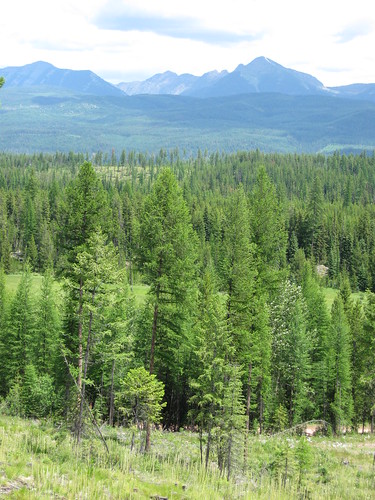
The U.S. Forest Service's Forest Legacy Program, working with Montana Department of Fish, Wildlife, and Parks, the Trust for Public Land, and the Nature Conservancy, and local groups helped permanently protect more than 10,000 acres of Montana forest land on Wednesday, July 27, protecting it for wildlife habitat and future generations of Americans.
The Clearwater Project is part of the Montana Legacy Project, which is facilitating the conservation of 310,000 acres in the state. The Forest Service contributed $5.9 million toward the purchase of the parcel.
The title to land will be held by Montana Fish, Wildlife, and Parks and it is the 15th closing by the state through the Forest Service’s Forest Legacy Program. Under state management, traditional uses of the land will continue and a management plan has been developed by the state to address both wildlife and forest management objectives.
“It helps the local economy by maintaining local uses and access,” said Steve Knapp, Wildlife Habitat Bureau Chief, Montana Fish, Wildlife, and Park. “Local government is supportive, it’s a landscape-level, large scale approach to conserving important wildlife habitat and it enhances adjacent federal lands, including the Lolo National Forest. “
In addition to the game and non-game species that use the area, the Clearwater Project lands provide critical habitat for Canada lynx, grizzly bears, and bull trout, all federally listed endangered species. It’s a destination for many thousands of recreationists every year, including hunters, snowmobilers, fishermen, and hikers.
The Clearwater project directly abuts the Confederated Salish and Kootenai Tribe's South Fork Jocko Tribal Primitive Area and is one of the most important cultural sites for the tribe. The "Historic Kalispell Trail to the Buffalo" crosses the Project. Evidence remains of fires started by Nez Perce Indians as they left the valley in the fall to improve grasses and shrubs. These fires have left great savanna areas with large diameter pines.
As Steve Knapp, Montana FWP relates “What we saw as a potential problem--Plum Creek Timber Company’s decision to start selling some of their western Montana timberland for private development--we also saw as a potential opportunity for the state to acquire important wildlife and fisheries habitat.” Steve and the other entities involved knew the Forest Legacy Program was a likely source of assistance to acquire some of the former Plum Creek lands.
With its focus on forested lands, the Forest Legacy Program was an opportune match with the Fish, Wildlife, and Parks habitat conservation program. It afforded the state the opportunity to round out its portfolio of protected fish and wildlife habitat by including forest lands in the state’s system of wildlife management areas.
“Forest Legacy is a great program,” said Knapp. “It has funded a project in Montana every year since 2000. Montana has received a total of $45 million in Forest Legacy funding, conserving 170,754 acres, for either conservation easements or land acquisition. “
Dee Sessions, the Forest Service’s Forest Legacy program manager in Ogden sees his role as a coach, working with states to develop sound, supportable proposals that compete well during the nationwide review and ranking of Forest Legacy proposals.
In addition to The Trust for Public Land and The Nature Conservancy, the local and regional land organizations Vital Ground Foundation and Montana Land Reliance facilitated conservation easements on smaller, private tracts used as non-federal matches for a number of Forest Legacy projects.
“Of the 49 states and 4 territories involved in the Forest Legacy Program that compete for national funding, Montana is considered one of the top,” said Dee. “Montana’s reputation for putting together high quality projects is second to none.”
